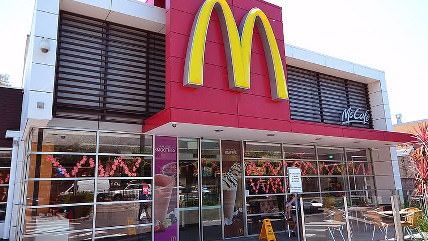Austin City Limits Fast Food Restaurants?
A proposal in Austin, Texas, could ban fast food restaurants-and maybe even ensnare the city's beloved food trucks.

The Austin, Texas, city council will meet next Thursday to consider a resolution that could eventually ban "fast-food food restaurants from locating near areas that children frequent."
Specifically, the ban, or "Healthy Food Zone ordinance," would restrict fast food restaurants from locating anywhere near "schools, municipal parks, child care centers, libraries and recreation centers" in the city.
The resolution directs the city manager to work to draft a timeline before the end of the year for developing an ordinance that, if passed, would take effect in 2016.
"If passed, this would only affect new fast-food chains from being built," writes KEYE-TV's Alex Boyer. "Existing one[s] (sic) would be allowed to stay put."
That may be true. But I see nothing in the resolution's language that would guarantee that customers who like their existing fast food restaurant would be able to keep their existing fast food restaurant.
For example, the resolution would require the city manager "to gather and prepare data that identifies locations of fast food restaurants" in Austin. If the ordinance would only ban future restaurants, then why gather data on existing restaurants?
The resolution also doesn't distinguish between "existing" or "new" fast food restaurants. Neither word appears in the resolution.
An attachment to the resolution, model ordinance language developed by a public-health outfit called ChangeLab Solutions, Findings for Model Healthy Food Zone Ordinance, makes clear that an existing fast food restaurant could remain in place "unless the business changes or attempts to expand its use in some way (as defined by the ordinance)."
That'd be a killer. New awning? New paint job? New drive-thru window? Those are business changes or expansions that I suspect could spell the end for an existing fast food restaurant under an Austin ordinance.
Even worse is the subtitle of the ChangeLab Solutions model ordinance that Austin wants to adopt: Creating a Healthy Food Zone Around Schools by Regulating the Location of Fast Food Restaurants (and Mobile Food Vendors).
And mobile food vendors! This model ordinance could ensnare not just fast food restaurants in Austin but might also deal a severe blow to its beloved food truck community.
But there's more.
Let's say the KEYE report is correct, and I'm wrong, and that any ordinance adopted by the Austin city council wouldn't target existing fast food restaurants. In that case, the law would boast some dramatic unintended consequences.
If the ban wouldn't target existing fast food restaurants at all, then it would really just act as a protectionist measure that ensures existing businesses don't have to compete with new market entrants while guaranteeing customers for the very eateries that spurred the council to consider this resolution in the first place.
There are more reasons to hate the resolution, not the least of which is that it would undermine parental control. It's undoubtedly true that many parents or guardians don't want their kids to eat at fast food restaurants before or after school. That's fantastic. But those parents already have a whole range of options available to prevent their children from doing so. Parents can pack their child's lunch to make sure they eat the right quantity and quality of food at school during the day. They can tell their child not to buy food at a restaurant or corner store before or after school. Or—and this one's very effective even if all else fails—parents can send their child to school with no extra money to buy food at a fast food restaurant.
Austin's proposed resolution and ordinance may seem novel, but the fact is we've seen this story play out elsewhere.
Los Angeles first proposed a moratorium on new fast food restaurants in 2007 in an attempt to combat an obesity rate of 30% in South Los Angeles. The proposal became law in 2008.
A 2009 RAND study, funded by the National Institutes of Health, poured cold water on the notion that banning fast food establishments would stem rising obesity rates.
Why?
"If you look at it per 100,000 residents, the area is not overrun with McDonald's," study co-author Roland Sturm said in 2009, referring to South Los Angeles. "The story about fast-food chains does not hold up."
This year, the city mulled putting an end to the ban.
One possible reason? Obesity in South Los Angeles, 30% in 2007, had climbed to 33% by 2012 despite the ban on new fast food restaurants.
Like Los Angeles, Austin is both a fantastic city and a fantastic city in which to eat. It boasts one of America's most vibrant and important food truck scenes. It's home to America's largest healthy organic grocer, Whole Foods. And its barbecue is among the country's best. It's got all those great options, and everything above, below, and in between.
Let's hope that an Austin that's great in large part because it offers so many food choices won't be made less so by a misguided city council proposal to ban fast food.


Show Comments (405)